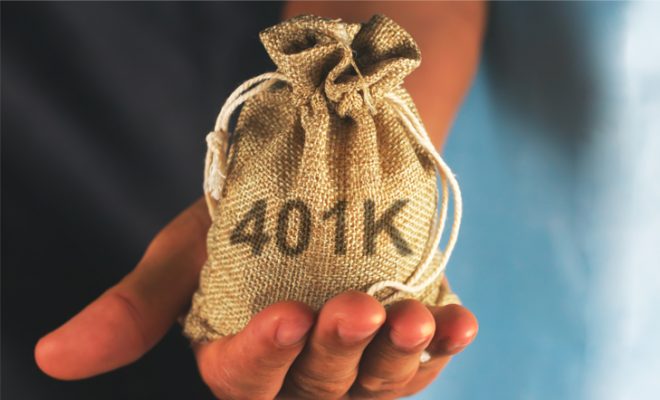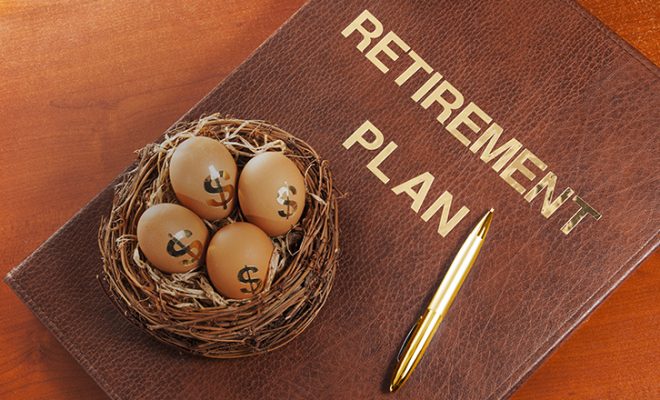How to Protect Your 401(k) from a Market Crash

A 401(k) plan can be your most reliable financial companion in retirement. With years of investing and employer matches, it can really help you reach your retirement goals and enjoy the lifestyle you envision for yourself and your loved ones. However, your 401(k) can go through ups and downs due to market changes. In a crash, your investments can lose value. Knowing what to do when this happens is essential to protect your finances and peace of mind.
A financial advisor can help you during these times by offering strategies tailored to your needs and goals. This article can also help you understand what you can do to confidently navigate a downturn and stay on track for retirement.
Below are 5 things that can help protect your 401k from a market crash:
1. Continue contributing to your 401(k) plan and aim to get your employer’s match
When the market is shaky, you may be tempted to stop your 401(k) contributions. But you should aim to stay the course. A 401(k) is a long-term strategy that depends on steady, regular investing, regardless of short-term ups and downs. Missing contributions during a market downturn could result in missing the chance to buy potentially rewarding assets at lower prices. This is called buying the dip, and it can be a smart way to build wealth over time. Continuing to contribute during a market crash allows you to purchase shares at discounted prices. Over time, as the market recovers, and it always has in the past, those cheaper investments may offer a better potential to grow in value. Pulling back when stock prices fall can delay your retirement goals.
Holding back during a market crash can also mean missing out on one of the biggest perks of your 401(k), which is the employer match. Many employers offer to match a portion of your contributions, up to 50% or even 100%, up to a certain limit. This is added to your retirement savings and can help it grow considerably. Failing to contribute enough to get the full match is almost like leaving a part of your paycheck on the table. No matter how tight your budget is and what is happening in the market, the goal should be to contribute at least enough to earn that full match. Of course, there may sometimes be a catch. Some employers require you to work with the company for a certain period before their contributions fully vest. This could be one year, two years, or longer. Still, this should not stop you from making the most of the match. The more you invest, the more you stand to gain over time. And if you stay long enough to meet the vesting period, all that extra money is yours.
2. Rebalance your 401(k) portfolio when the market goes down
Diversification is essential in any 401(k), but it becomes especially important when the market takes a turn. Having all of your money in one type of investment can make your portfolio susceptible to losses during downturns. A balanced mix of stocks and bonds can help you out when markets dip. Still, diversification alone is not enough. You also need to revisit your portfolio regularly to make sure it stays in line with your original retirement goals. This is where rebalancing comes in. Rebalancing is the process of adjusting how much you have in each type of investment to return to your target asset mix. Over time, certain investments may grow faster than others. For example, if your stockholdings perform well in a year, they may begin to take up a larger share of your portfolio. This can increase your risk without you even realizing it. On the other hand, during a downturn, bonds may begin to make up a larger portion of your investments, which can reduce your growth potential. When the market drops, it is a good time to review your portfolio. You must check to see whether the mix of assets in your portfolio is still aligned with your plan. If your portfolio has shifted from your original allocation, rebalancing can help you get things back in order. For instance, you may sell some investments that have performed well and use the money to buy assets that are now in a minority on your portfolio. This can help bring your risk level back under control and keep your plan disciplined.
Financial advisors often recommend rebalancing at least once a year, irrespective of market conditions. Some suggest doing it quarterly, especially if you are managing your own 401(k) investments. Rebalancing is especially important if you are approaching retirement. As the time to start withdrawing your funds gets closer, having too much exposure to volatile investments could be risky. Rebalancing can help you shift the focus gradually toward more stable assets, such as bonds, to preserve what you have built over the years. One of the easiest ways to keep your 401(k)-portfolio balanced can be to invest in a target-date fund. These funds adjust their asset allocation over time. They automatically shift to more conservative options as your retirement date nears. Target-date funds are one of the best 401(k) investment funds as they rebalance automatically on your behalf. However, if you prefer to have more control over your investments, speaking with a financial advisor can also help. They can help you understand how often to rebalance and what changes are appropriate based on your age, retirement timeline, and risk tolerance.
It is important to remember that rebalancing does not involve withdrawing money from your 401(k). All transactions happen within the account, so there are no immediate tax consequences. Hence, it is a smarter way to manage risk, stay on track with your goals and protect your future, even when the market feels uncertain.
3. Have some cash at your disposal
Cash can offer both protection and opportunity in a market crash. You can use it to cover short-term expenses, avoid a poorly timed withdrawal, and invest during a dip. When the stock market crashes, you may be forced to sell investments at a loss to cover your expenses. However, having a cash buffer can help you avoid such a situation.
If you are still working, your 401(k) is likely off-limits until you reach a certain age unless you want to face early withdrawal penalties and taxes. That is why it is important to have a separate emergency fund in a liquid account. This cash reserve allows you to cover unexpected expenses without touching your long-term 401(k) retirement savings. It buys you time to make better financial decisions and ride out the market downturn with less stress. For those who are nearing retirement or already retired, the option to access 401(k) funds without penalty may be available. However, withdrawing during a market crash may require you to sell investments when their value is low. This can result in losses and reduce the amount of money that remains in your account to grow later. Having cash outside your retirement accounts gives you the flexibility to delay your withdrawals from your 401(k) until the market recovers.
Another reason to hold some cash is to take advantage of opportunities when prices fall. The strategy of buying the dip works best when you have money available to invest at the right time. During a downturn, stocks become undervalued, but they may still exhibit long-term potential. If you have cash available, you can purchase these stocks at a discount and potentially benefit later. This is not only a smart way to stay invested, but it also gives you a chance to grow your retirement savings more effectively over the long term.
Having cash on hand also helps ensure you can continue contributing to your 401(k), which may allow you to keep earning your employer match. That match is essentially free money, and skipping contributions during a downturn would translate to missing out on that benefit. With a cash reserve to lean on, you are in a better position to keep your retirement plan on track regardless of what the market is doing.
4. Stay calm and disciplined through the ups and downs
Market downturns can be emotionally draining. They can trigger fear and frustration, and you may want to react immediately. However, in most cases, the best response during a downturn is not to make dramatic changes but to stay calm and stick to your long-term strategy. History has shown that markets tend to recover over time. If your investments are well-diversified and aligned with your long-term retirement goals, staying the course is a recommended strategy.
As a young investor, you have time on their side. In this case, market downturns are expected and can be opportunities for potential growth. You must continue to invest during a low point so you can buy more shares at lower prices, which can help your investment portfolio grow faster when the market rebounds. The essence of a long-term strategy is to trust the process and allow time and compounding to do their work.
If you are closer to retirement, the situation can feel more urgent. However, having a solid retirement plan and being prepared well in advance is essential. If you have already built that foundation, now is the time to simply follow it. Instead of making changes out of fear, focus on the tools you have. As mentioned earlier, having cash on hand can help you avoid withdrawing from your 401(k) when the market is down. If you need additional income, you might consider drawing from sources like a Roth Individual Retirement Account (IRA), which allows for tax-free withdrawals, or filing for Social Security benefits if you meet the criteria. These options can offer you breathing room while giving your 401(k) time to recover.
5. Speak to a financial advisor to ensure you are on the right track
When markets crash, and your 401(k) plan seems to be taking a hit, you may get the sense of losing control over your financial future, which can be deeply unsettling. During these moments, speaking with a financial advisor can be helpful. Financial advisors can bring perspective. They can help you take a step back, review your overall plan, and ensure your investment strategy still fits your goals.
An advisor can guide you on what to do with your 401(k). They can help remove the emotion from investing and offer guidance based on experience. They can offer personalized suggestions that match your unique situation. Advisors can also help you make use of other income sources if needed. If you are eligible for Social Security benefits, or if you have a Roth IRA or other savings accounts, a professional can guide you on how to draw from these in the most tax-efficient way. They can help you minimize penalties, protect your long-term 401(k) savings, and find the right balance between spending and preserving your nest egg.
To conclude
Market crashes can be overwhelming, especially when you see the value of your 401(k) drop. However, during these times, it is important to focus on the long term and not get bogged down by short-term events. The decisions you make during a downturn can have a lasting impact on your retirement savings. Hence, being cautious and mindful is essential. Keep in mind that time changes everything, and when the market recovers, you may come out stronger. Still, it is essential to make the right decisions along the way. You can benefit from hiring a financial advisor during this time. An advisor can help you assess your current position, understand your risk tolerance, and adjust your strategy to match your retirement goals.
Use the free advisor match tool to get matched with seasoned financial advisors who can guide you on what steps you can take to protect your 401k funds during a market crash and stay on track for retirement. Answer a few simple questions based on your financial needs and get matched with 2 to 3 financial advisors who may be best suited to help you.
For further information on creating a suitable retirement plan for your unique financial requirements, visit Dash Investments or email me directly at dash@dashinvestments.com.
About Dash Investments
Dash Investments is privately owned by Jonathan Dash and is an independent investment advisory firm, managing private client accounts for individuals and families across America. As a Registered Investment Advisor (RIA) firm with the SEC, they are fiduciaries who put clients’ interests ahead of everything else.
Dash Investments offers a full range of investment advisory and financial services, which are tailored to each client’s unique needs providing institutional-caliber money management services that are based upon a solid, proven research approach. Additionally, each client receives comprehensive financial planning to ensure they are moving toward their financial goals.
CEO & Chief Investment Officer Jonathan Dash has been covered in major business publications such as Barron’s, The Wall Street Journal, and The New York Times as a leader in the investment industry with a track record of creating value for his firm’s clients.










